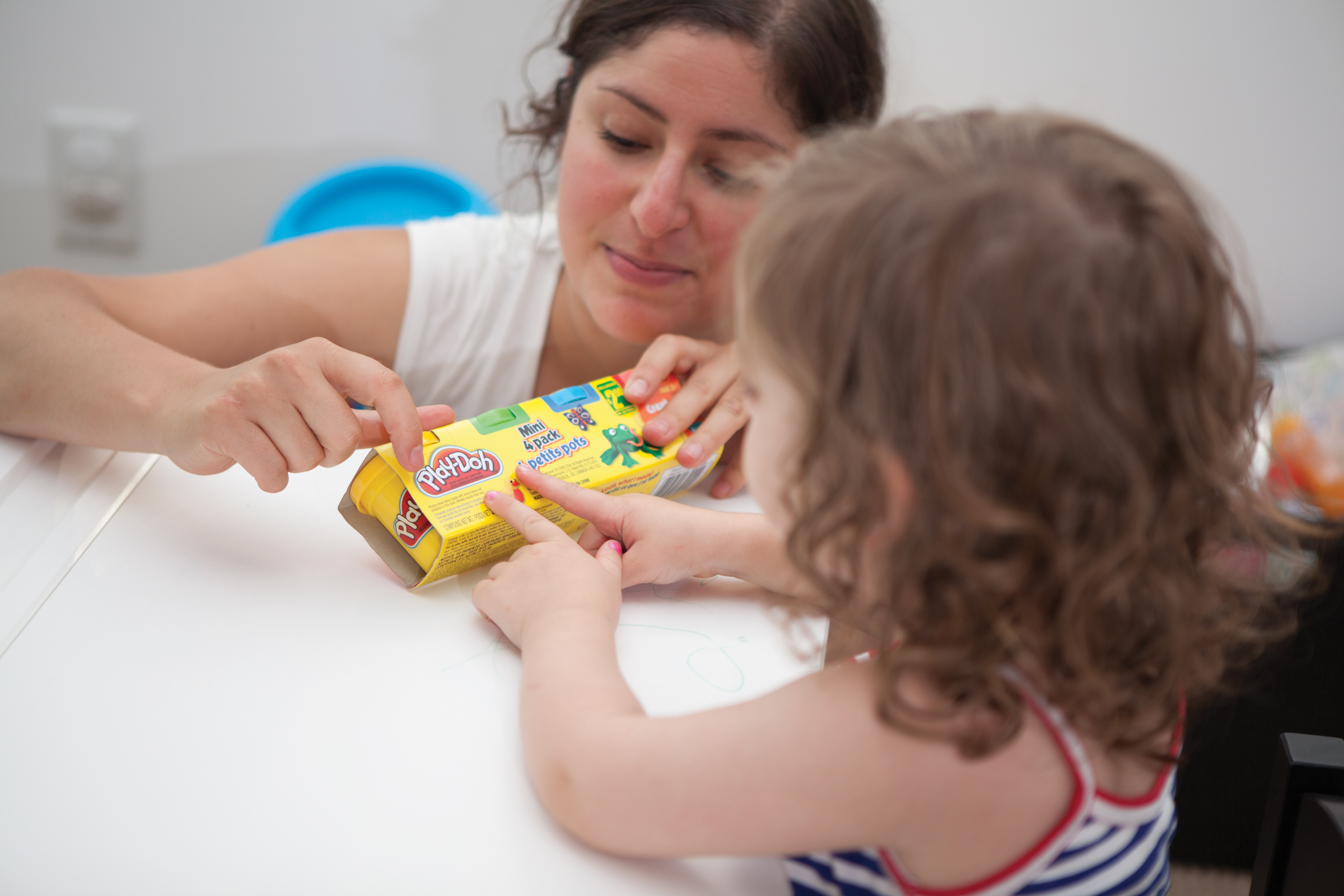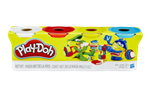Make Print POP!

Children need to learn all about print in order to learn how to read and write.
They need to:
- understand that print has meaning and communicates ideas – just like spoken language
- learn that print is made up of letters, spaces, words, and punctuation marks
- learn that we read print in a specific direction, and that this affects how we hold a book and turn the pages
There are many ways you can help your child learn about print right at home. Many of your everyday activities and interactions provide opportunities to use a strategy from the I’m Ready™ guidebook called “POP”, which stands for Point out Print.
Pointing out print involves drawing attention to and talking about the way print works and what print means.
How to Point out Print (POP)

- Track words with your finger while you read to your child, showing them that the words you are saying match the printed words on the page
- Talk about letters by saying their names as you point to them
- Point out the first letter in a word (e.g., “That word says ‘STOP’ and it begins with the letter “S”)
- Point out punctuation marks (like question marks and exclamation marks), and explain what they mean
- Show your child examples of both upper-case and lower-case letters
- Explain that print inside speech balloons shows us what someone is saying
- Point out the book’s front cover, title, and author’s and illustrator’s names
- Show your child how to hold a book, that we read from left to right, and how we start at the top of the page and read down to the bottom
You don’t need special toys, games or activities to point out print. There are many times during everyday life when you can POP with your child. Once you start looking for it, you’ll be amazed at how print is everywhere! Here are some ideas to help you POP throughout the day.
POP during your everyday activities
There are endless opportunities to Point out Print by adding print to daily activities or drawing attention to the print found on familiar objects, such as packages, signs, calendars, or the mail. Here are some ideas from the I’m Ready™ guidebook to help you find ways to POP during the day with your child:

POP during meals
While preparing a meal, point out the print on the measuring cups and spoons or in the recipe. Draw attention to print on food packaging (e.g., on the carton of milk or cereal box). Highlight interesting fonts or how the dot over the “i” in “Cheerios” is actually a Cheerio! Your child might enjoy making personalized placemats with the family’s names on them, and you can talk about the letter everyone’s name begins with.
POP on a walk

Point out print on street signs, stores, and parking metres. Count the number of words on signs like “No parking” and “Garage sale”, highlighting that the space between the words shows where one word ends and another one begins. Talk about the upper-case letters on STOP signs. As you approach your street, point to the street sign and talk about how the words on the sign show the name of your street.
POP when you watch shows

While watching TV together, point out print on the TV guide channel, explaining how the words tell us the names of shows. Many children's shows have interesting fonts in the title that you can draw attention to (e.g., "Look! Peppa is standing on the letters 'p' and 'a'!" or "The Paw Patrol logo has a paw print on the A"). If you watch a show on a tablet or computer, you can talk about the keyboard, and how pressing the letters allows you to type words. As you type in the name of your child's favourite show, you can talk about the letters (e.g., "Bluey starts with the letter B").
POP when you play

You can add print to play activities, such as making signs with your child for a pretend grocery store, a menu for a pretend restaurant, or a prescription for the "doctor" to give a patient. You can point out print on toy packages (e.g., "Let's count how many letters are in the word firetruck). POP while you play with magnetic letters or alphabet blocks or puzzles, using the letters to spell out your child's name. You can also use sidewalk chalk, finger paint, or playdough to make letters. Or your child might have fun trying to draw letters with their finger on a cookie sheet full of shaving cream!
POP when you shop

The grocery store is full of print on signs and food packaging. You can talk about the print you notice together, reading the words and naming some letters. Grab a store flyer and track the names of items with your finger as you read them. Play a game where you look for different letters on packages as you shop. If your store has a self-checkout, you can point out the print that appears on the screen after you scan items. You can also POP before you shop by making a shopping list together with your child. Talk about the letters as you print them on the list, saying things like "Apple starts with the letter 'A', just like your name, Anna!"
POP when you open the mail

You can POP when you open the mail, drawing attention to your name and address on the envelope. Company logos often have interesting fonts, and you can point this out while talking about the letters (e.g., "This word says 'VISA', and it starts with the letter V"). When your child receives a birthday card, you can look for the name of the person who sent the card. Sending mail provides opportuniites to POP too! Get your child involved by making greeting cards, and POP as you make the card and address the envelope.
POP when you read books
One of the best times to POP is when you read books with your child. Besides the above ways to point out print, reading with your child provides an opportunity to show your child how books are used in a specific way, such as:
- how to hold the book right side up
- how to turn the pages so you can look at the book from front to back
- that books have a title, author and illustrator written on the cover
- how we read the print starting at the top of the page and then read down towards the bottom of the page
You can find many suggestions about how to POP during book reading in our Book Nook, with books like, My Truck is Stuck, A Big Guy Took My Ball, and Scaredy Squirrel.
A final thought to help you POP…
The most important thing to remember when you POP is to follow your child’s lead. POP during activities that your child is interested in and when they are having fun. Don’t add too many new ideas about print at once as this can be overwhelming. Your child’s print knowledge will grow over time as you POP naturally during fun, everyday interactions.
You can find many more ideas about how to encourage your child’s early literacy skills in I’m Ready™: How to Prepare Your Child for Reading Success.
Similar articles by tag:
